Examining Public Concerns and Attitudes toward Unfair Events Involving Elderly Travelers during the COVID-19 Pandemic Using Weibo Data
Abstract
1. Introduction
- We collected a dataset of seven-month Weibo messages related to the unfair events involving elderly people during the COVID-19 outbreak. This was done to capture public perceptions on the issue of health code measures through the comprehensive use of our web crawler procedure.
- We developed a hybrid Weibo mining framework integrating the term-frequency–inverse-document-frequency (TF-IDF) algorithm, the latent Dirichlet allocation (LDA) model, and sentiment analysis provided by the Baidu AI platform. This framework was constructed to identify the discussion topics from the general public as well as their attitude toward the unfair events.
- Our findings provide suggestions for government authorities and other transportation stakeholders to make policy decisions on the transportation system by considering equity and fairness for elderly travelers. Moreover, understanding public perceptions toward transportation policies during the pandemic can assist transportation agencies to better prepare for a mobility system for future outbreaks.
2. Methodology
2.1. Data Collection and Pre-Processing
2.2. Term-Frequency–Inverse-Document-Frequency (TF-IDF) Algorithm
2.3. Latent Dirichlet Allocation (LDA) Topic Model
2.4. Text Sentiment Analysis
3. Results and Discussion
3.1. Temporal Trends in the Number of Weibo Messages
3.2. Focus of Public Concern
3.3. Discussion Topics
3.4. Changes of Weibo Messages on Each Topic
3.5. Attitude Tendency of the Public
4. Conclusions
- Before the spread of sensational information and rumors, the public rarely devoted attention to the problems of elderly travelers on the Internet. A rapid increase in the volume of Weibo messages was observed when the fake news was being reported, indicating that the public is more likely to be influenced by sensational information and rumors during the COVID-19 pandemic. This is the manifestation of the “infodemics” created by social media [43]. When the amount of information excessively increases, rumors and misinformation often begin. Social media can help spread these rumors and misinformation quickly in communities, making it difficult for the public to find trustworthy and reliable guidance during a pandemic. Therefore, it is important to provide timely and reliable information for the public during the COVID-19 pandemic. Social media has become an essential channel for government authorities and service providers to capture people’s demands and to realize better responses when a crisis occurs.
- The top three topics of public concern were extracted including a description of unfair events, mobility service, and their providers, and the status quo of elderly travelers. Furthermore, the duration of the public’s concern on transportation services provision lasted longer than those on the other two topics. Hence, transportation service providers must provide feedback to the public as well as implement improvements in mobility services on time.
- Most people who participated in the discussion expressed negative attitudes regarding these unfair events, with 66% of the attitude tendencies being negative. Although the government released their responses afterward, people remained negative in their comments about transportation departments, while they held a more positive attitude toward the status quo of elderly travelers. Government authorities still need to make a significant effort in promoting the equity and fairness of policies for elderly people. Actively providing affordable training opportunities for information acquisition [7] and improving the design of health codes tailored for the elderly is highly recommended.
Author Contributions
Funding
Institutional Review Board Statement
Informed Consent Statement
Data Availability Statement
Conflicts of Interest
References
- Guan, L.; Prieur, C.; Zhang, L.; Prieur, C.; Georges, D.; Bellemain, P. Transport effect of COVID-19 pandemic in France. Annu. Rev. Control. 2020, 50, 394–408. [Google Scholar] [CrossRef]
- WHO Coronavirus Disease (COVID-19) Dashboard. Available online: https://covid19.who.int/ (accessed on 14 September 2020).
- Zhang, J. Transport policymaking that accounts for COVID-19 and future public health threats: A PASS approach. Transp. Policy 2020, 99, 405–418. [Google Scholar] [CrossRef] [PubMed]
- Liang, F. COVID-19 and Health Code: How Digital Platforms Tackle the Pandemic in China. Soc. Media Soc. 2020, 6, 666325559. [Google Scholar] [CrossRef]
- People.cn. Hangzhou Health Code Will Be Promoted Nationwide. Available online: http://scitech.people.com.cn/n1/2020/0217/c1007-31591172.html (accessed on 11 February 2021).
- Zhao, X.; Wang, L.; Ge, C.; Zhen, X.; Chen, Z.; Wang, J.; Zhou, Y. Smartphone application training program improves smartphone usage competency and quality of life among the elderly in an elder university in China: A randomized controlled trial. Int. J. Med. Inf. 2020, 133, 104010. [Google Scholar] [CrossRef] [PubMed]
- Fang, M.L.; Canham, S.L.; Battersby, L.; Sixsmith, J.; Wada, M.; Sixsmith, A. Exploring Privilege in the Digital Divide: Implications for Theory, Policy, and Practice. Gerontology 2018, 59, e1–e15. [Google Scholar] [CrossRef]
- Tencent News. Elderly Person without a Health Code Was Refused Admission to the Subway System. Available online: https://new.qq.com/omn/20200808/20200808A0LWXS00.html (accessed on 14 September 2020).
- The Papernews. The Elderly Can Take the Bus with Health Certificate without Health Code. Available online: https://www.thepaper.cn/newsDetail_forward_8840253 (accessed on 14 September 2020).
- Martínez Caro, L.; Martínez García, J.A. Measuring perceived service quality in urgent transport service. J. Retail. Consum. Serv. 2007, 14, 60–72. [Google Scholar] [CrossRef]
- Upham, P.; Raper, D.; Thomas, C.; McLellan, M.; Lever, M.; Lieuwen, A. Environmental capacity and European air transport: Stakeholder opinion and implications for modelling. J. Air Transp. Manag. 2004, 10, 199–205. [Google Scholar] [CrossRef]
- Beck, K.H.; Yan, A.F.; Wang, M.Q. A comparison of web-based and telephone surveys for assessing traffic safety concerns, beliefs, and behaviors. J. Saf. Res. 2009, 40, 377–381. [Google Scholar] [CrossRef]
- Jiang, L.; Hiltunen, E.; He, X.; Zhu, L. A Questionnaire Case Study to Investigate Public Awareness of Smog Pollution in China’s Rural Areas. Sustainability 2016, 8, 1111. [Google Scholar] [CrossRef]
- Ravi, K.; Ravi, V. A survey on opinion mining and sentiment analysis: Tasks, approaches and applications. Knowl-Based Syst. 2015, 89, 14–46. [Google Scholar] [CrossRef]
- China Internet Network Information Center. The 46th China Statistical Report on Internet Development. Available online: http://www.gov.cn/xinwen/2020-09/29/5548176/files/1c6b4a2ae06c4ffc8bccb49da353495e.pdf (accessed on 14 September 2020).
- Zuo, F.; Kurkcu, A.; Ozbay, K.; Gao, J. Crowdsourcing Incident Information for Emergency Response using Open Data Sources in Smart Cities. Transp. Res. Rec. 2018, 2672, 198–208. [Google Scholar] [CrossRef]
- Liu, Y.; Li, Y.; Li, W. Natural language processing approach for appraisal of passenger satisfaction and service quality of public transportation. IET Intell. Transp. Syst. 2019, 13, 1701–1707. [Google Scholar] [CrossRef]
- Liu, Y.; Sui, Z.; Kang, C.; Gao, Y. Uncovering patterns of inter-urban trip and spatial interaction from social media check-in data. PLoS ONE 2014, 9, e86026. [Google Scholar] [CrossRef] [PubMed]
- Merodio, G.; Ramis-Salas, M.; Valero, D.; Aubert, A. How Much Is One Life Worth? The Right to Equity Healthcare for Improving Older Patients’ Health Infected by COVID-19. Sustainability 2020, 12, 6848. [Google Scholar] [CrossRef]
- Feng, J. The influence of built environment on travel behavior of the elderly in urban China. Transp. Res. Part D: Transp. Environ. 2017, 52, 619–633. [Google Scholar] [CrossRef]
- Zhou, Y.; Yuan, Q.; Yang, C. Transport for the Elderly: Activity Patterns, Mode Choices, and Spatiotemporal Constraints. Sustainability 2020, 12, 10024. [Google Scholar] [CrossRef]
- Ye, Q.; Chen, X.; Zhang, H.; Ozbay, K.; Zuo, F. Public Concerns and Response Pattern toward Shared Mobility Security using Social Media Data. In Proceedings of the 2019 IEEE Intelligent Transportation Systems Conference, ITSC 2019. 83 Symonds St, Grafton, Auckland, New Zealand, 1 January 2019; Institute of Electrical and Electronics Engineers Inc.: Auckland, New Zealand, 2019; pp. 619–624. [Google Scholar]
- Kim, D.; Seo, D.; Cho, S.; Kang, P. Multi-co-training for document classification using various document representations: TF–IDF, LDA, and Doc2Vec. Inf. Sci. 2019, 477, 15–29. [Google Scholar] [CrossRef]
- Blei, D.M.; Ng, A.Y.; Jordan, M.I. Latent dirichlet allocation. J. Mach. Learn. Res. 2003, 3, 993–1022. [Google Scholar]
- Griffiths, T.L.; Steyvers, M. Finding scientific topics. Proc. Natl. Acad. Sci. USA 2004, 101, 5228–5235. [Google Scholar] [CrossRef]
- Boutilier, R.G.; Bahr, K. A Natural Language Processing Approach to Social License Management. Sustainability 2020, 12, 8441. [Google Scholar] [CrossRef]
- Baidu AI Platform. Affective Tendency Analysis. Available online: https://ai.baidu.com/tech/nlp_apply/sentiment_classify (accessed on 14 September 2020).
- Weibo Open Platform. Weibo API. Available online: https://open.weibo.com/wiki/API (accessed on 14 September 2020).
- Lyu, Y.; Chow, J.C.; Hwang, J. Exploring public attitudes of child abuse in mainland China: A sentiment analysis of China’s social media Weibo. Child. Youth Serv. Rev. 2020, 116, 105250. [Google Scholar] [CrossRef]
- Weibo-Scraper 1.0.6. Project Description. Available online: https://pypi.org/project/weibo-scraper/ (accessed on 14 September 2020).
- Sun, L.; Yin, Y. Discovering themes and trends in transportation research using topic modeling. Transp. Res. Part C Emerg. Technol. 2017, 77, 49–66. [Google Scholar] [CrossRef]
- Qilu Evening News. The Elderly People Without Health Code Went to Zhejiang on Foot. Available online: https://www.qlwb.com.cn/detail/12473008 (accessed on 14 December 2020).
- Sina News. An Old Man without Health Code Went to Zhejiang on Foot. Available online: http://news.sina.com.cn/o/2020-06-23/doc-iircuyvk0065989.shtml (accessed on 14 December 2020).
- Fraustino, J.D.; Liu, B.; Yan, J. Social Media Use during Disasters: A Review of the Knowledge Base and Gaps. Available online: https://reliefweb.int/sites/reliefweb.int/files/resources/Social%20Media%20Use%20during%20Disasters.pdf (accessed on 14 December 2020).
- Dong, H.; Ma, S.; Jia, N.; Tian, J. Understanding public transport satisfaction in post COVID-19 pandemic. Transp. Policy 2021, 101, 81–88. [Google Scholar] [CrossRef]
- Huang, C.; Xu, X.; Cai, Y.; Ge, Q.; Zeng, G.; Li, X.; Zhang, W.; Ji, C.; Yang, L. Mining the Characteristics of COVID-19 Patients in China: Analysis of Social Media Posts. J. Med. Internet. Res. 2020, 22, e19087. [Google Scholar] [CrossRef] [PubMed]
- Chen, Q.; Pan, S. Transport-related experiences in China in response to the Coronavirus (COVID-19). Transp. Res. Interdiscip. Perspect. 2020, 8, 100246. [Google Scholar]
- Sun, X.; Yan, W.; Zhou, H.; Wang, Z.; Zhang, X.; Huang, S.; Li, L. Internet use and need for digital health technology among the elderly: A cross-sectional survey in China. BMC Public Health 2020, 20, 1386. [Google Scholar] [CrossRef]
- China Internet Network Information Center. The 43rd Statistical Report on the Development of China’s Internet. Available online: http://cnnic.cn/gywm/xwzx/rdxw/20172017_7056/201902/t20190228_70643.htm (accessed on 14 December 2020).
- Zhou, J.; Rau, P.P.; Salvendy, G. Older adults’ use of smart phones: An investigation of the factors influencing the acceptance of new functions. Behav. Inf. Technol. 2014, 33, 552–560. [Google Scholar] [CrossRef]
- People’s Daily Online. No Health Code Channel in Wuxi Station. Available online: http://js.people.com.cn/n2/2020/1012/c360299-34344249.html (accessed on 14 December 2020).
- Barbalet, J.M. Emotion, Social Theory, and Social Structure: A Macrosociological Approach; Cambridge University Press: Cambridge, UK, 2001; pp. 11–23. [Google Scholar]
- Merriam Webster. Words We’re Watching: ‘Infodemic’. Available online: https://www.merriam-webster.com/words-at-play/words-were-watching-infodemic-meaning (accessed on 23 January 2021).
- Ministry of Transport of the People’s Republic of China. Notice on the Implementation Plan for Solving the Difficulties of the Elderly in Using Intelligent Technology. Available online: http://xxgk.mot.gov.cn/2020/jigou/ysfws/202012/t20201228_3509294.html (accessed on 23 January 2021).
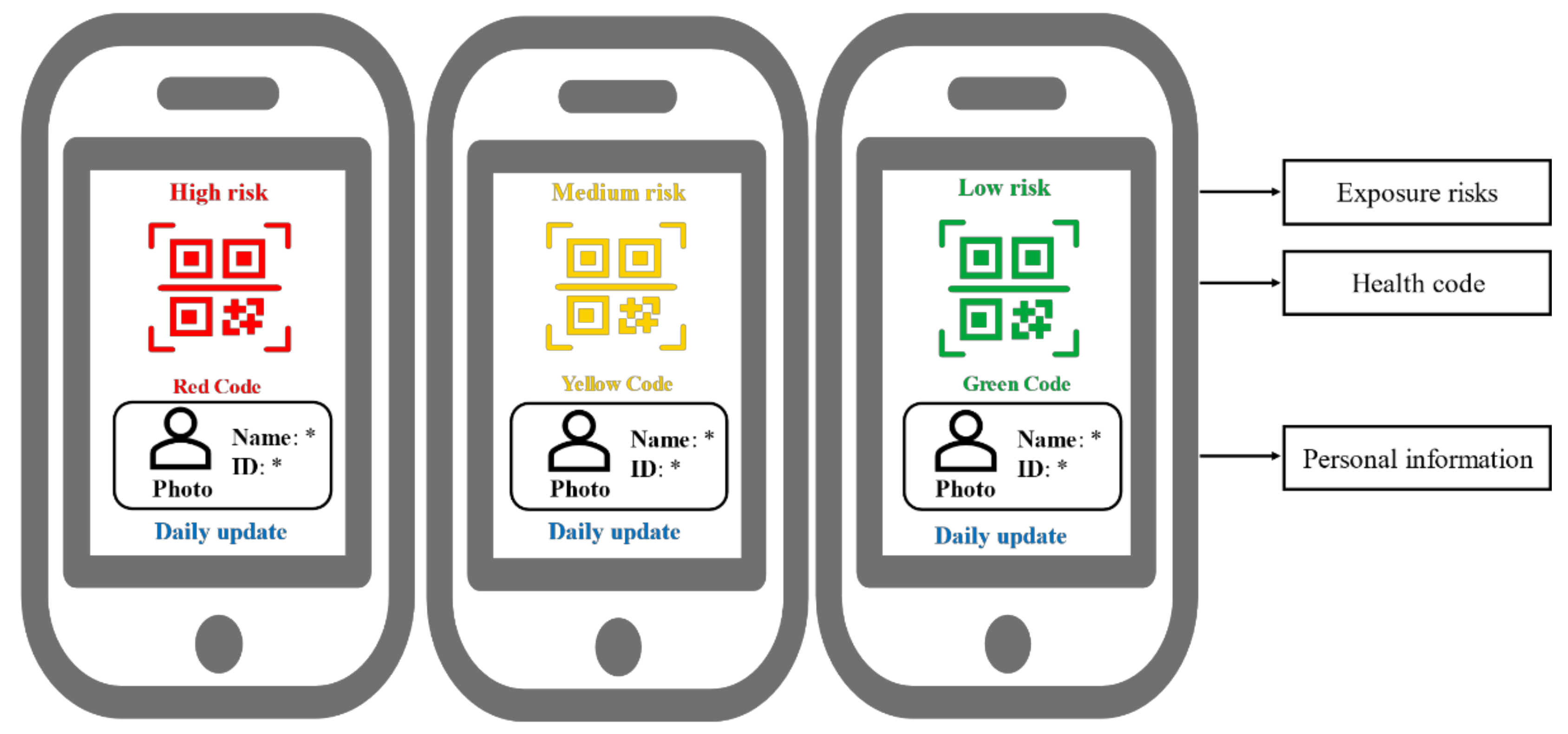
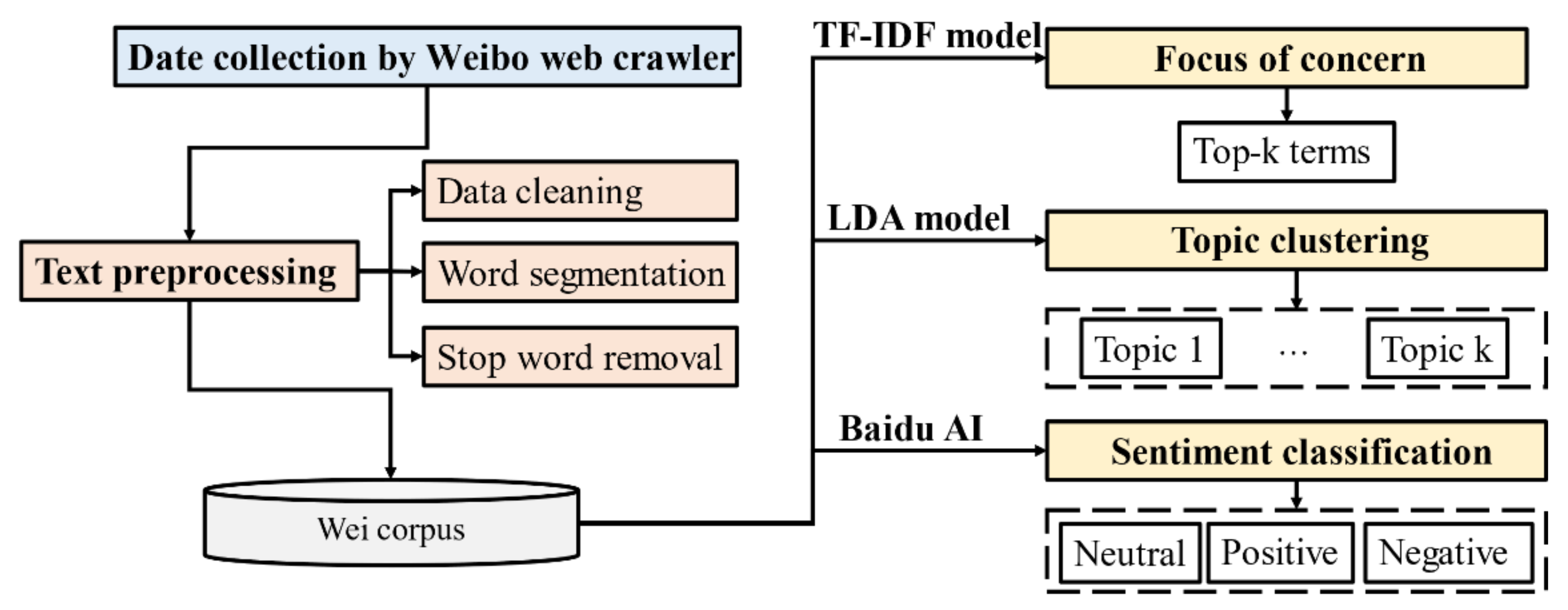

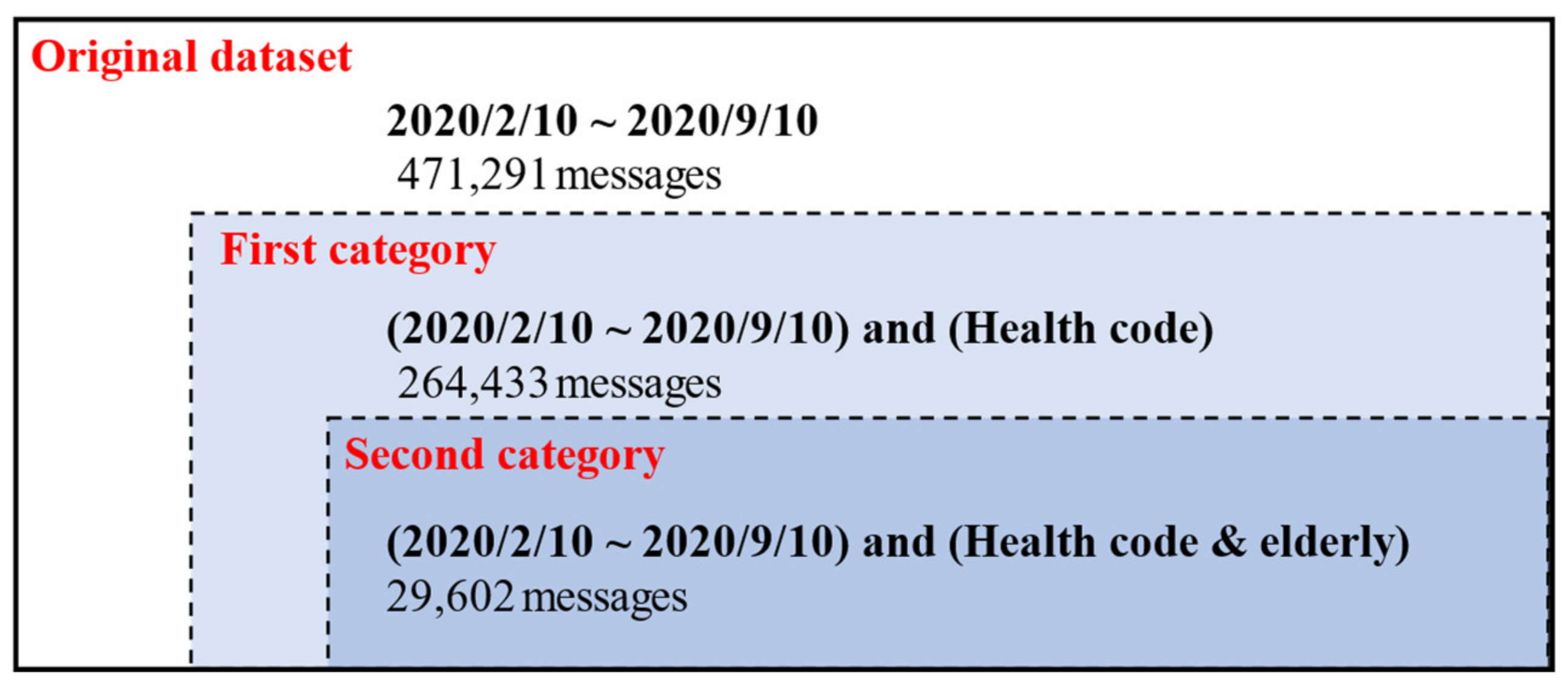
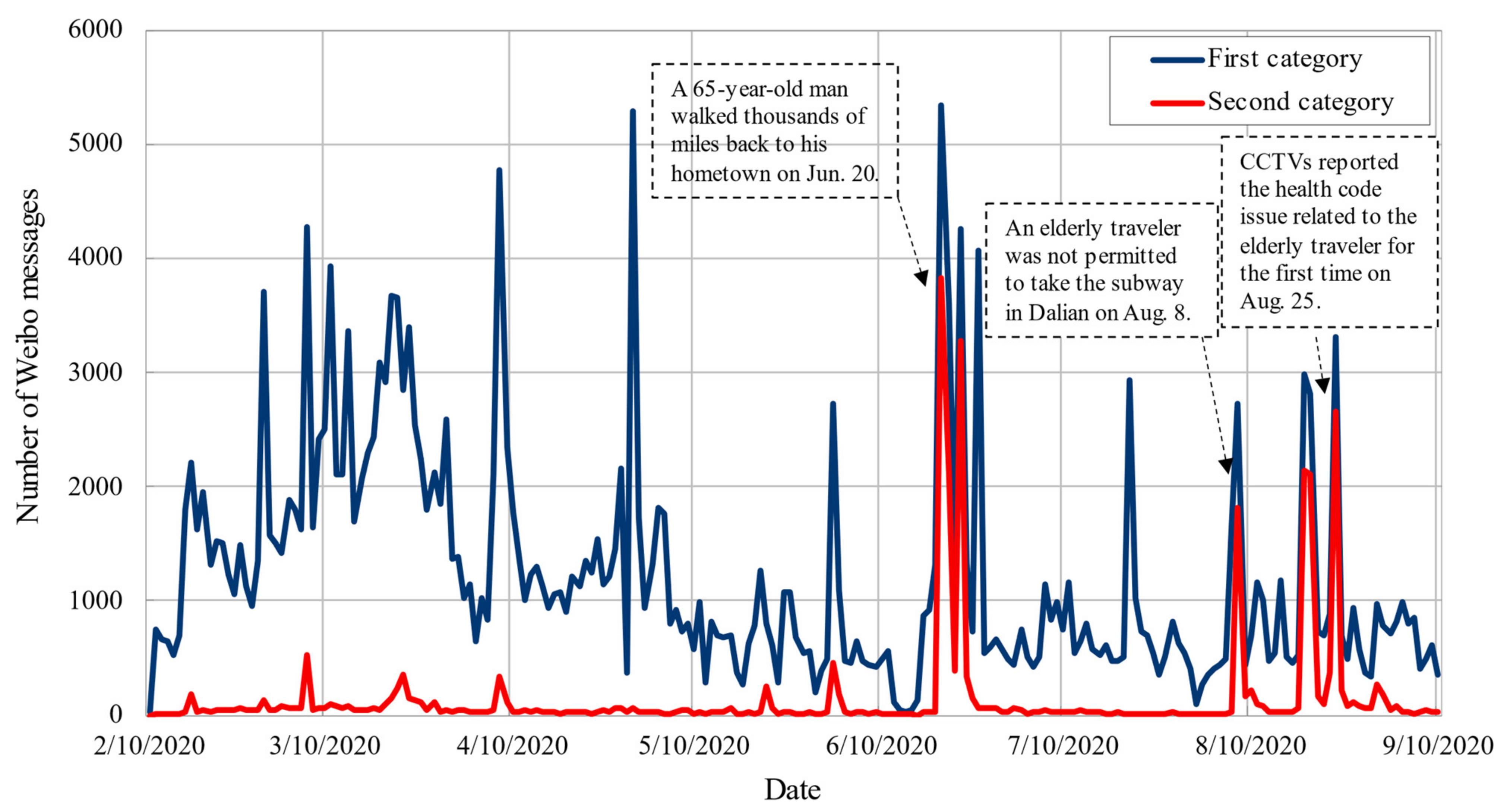
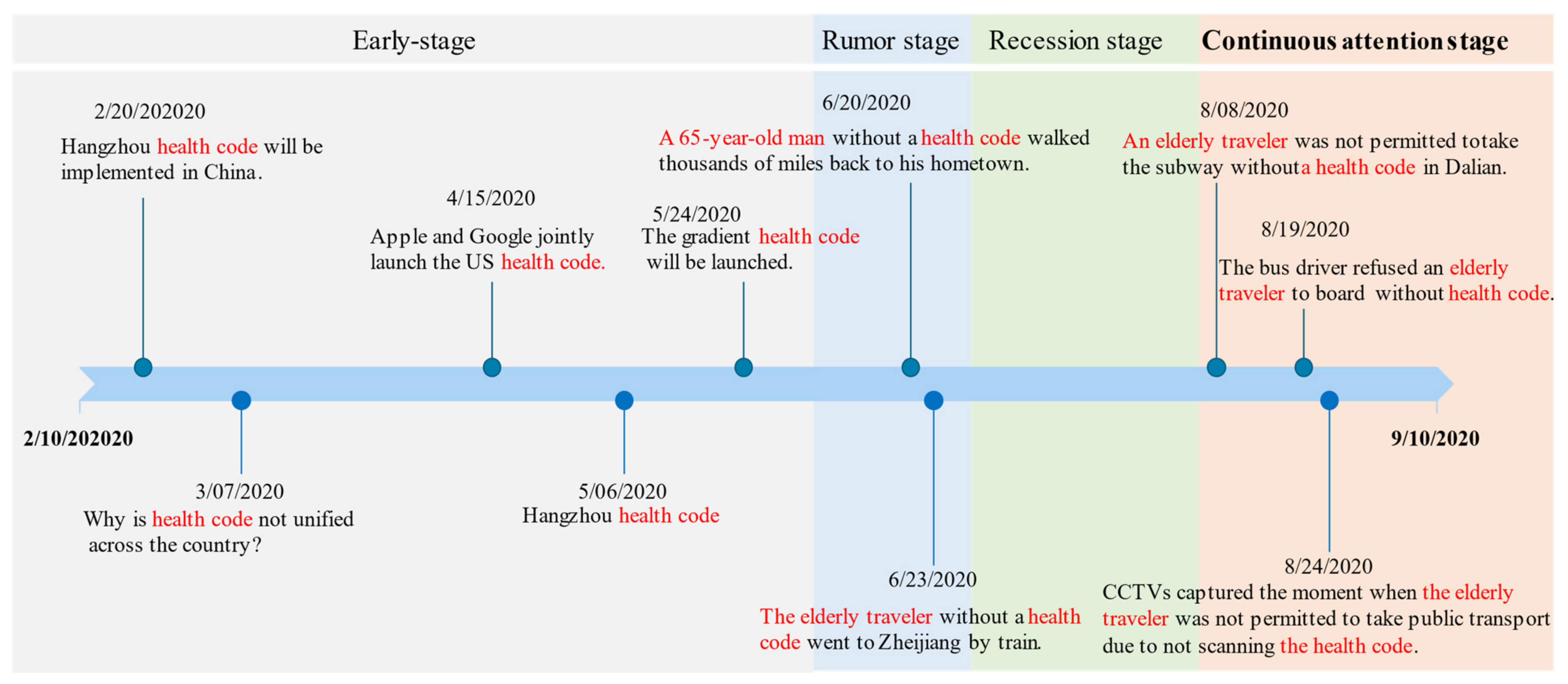
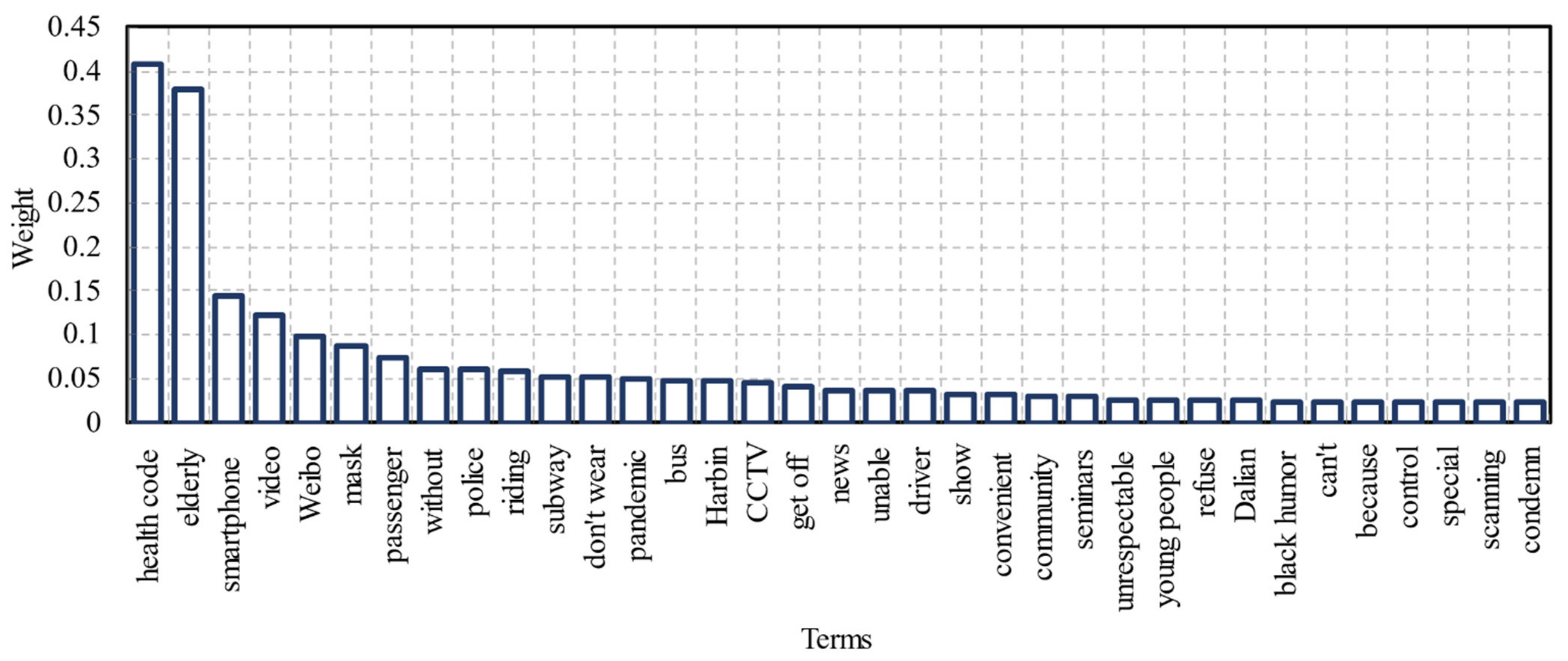
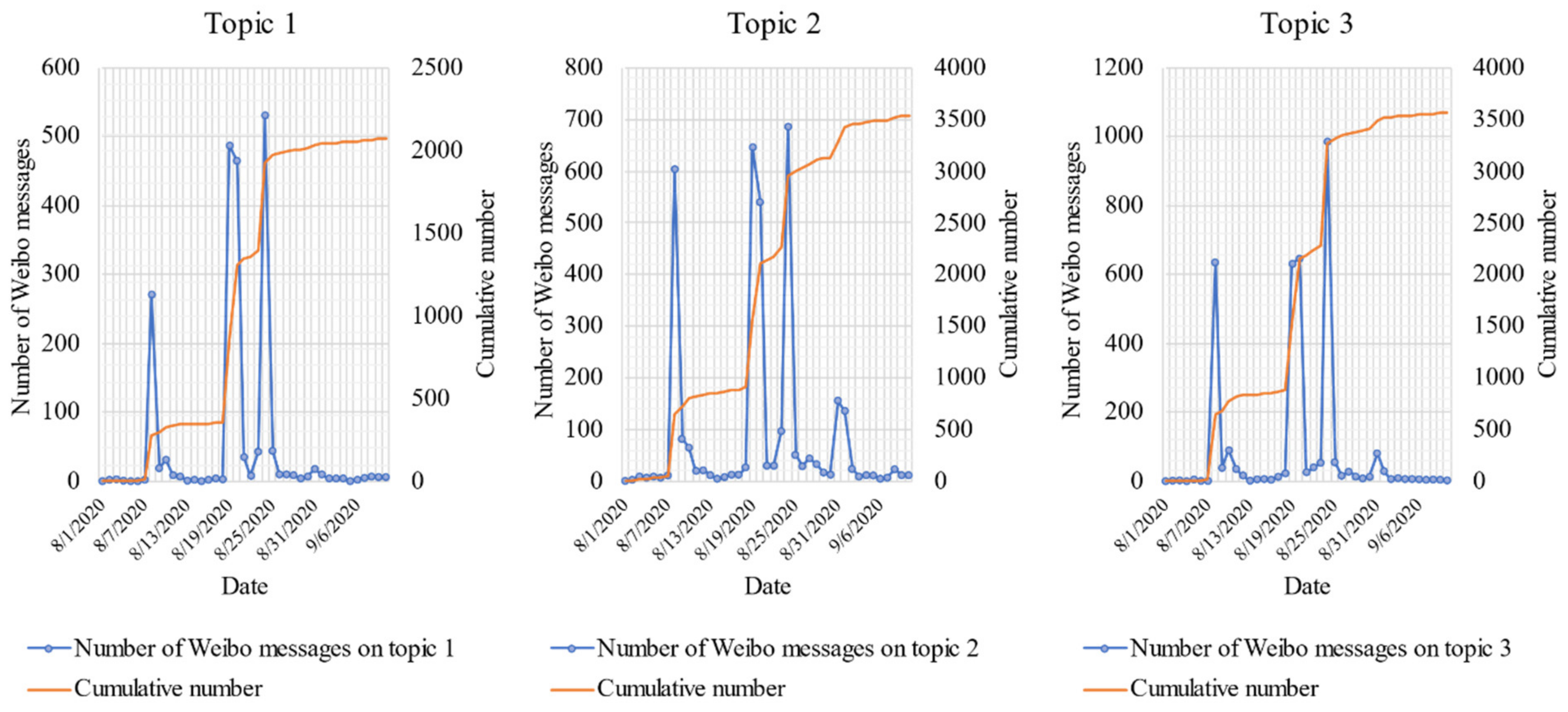
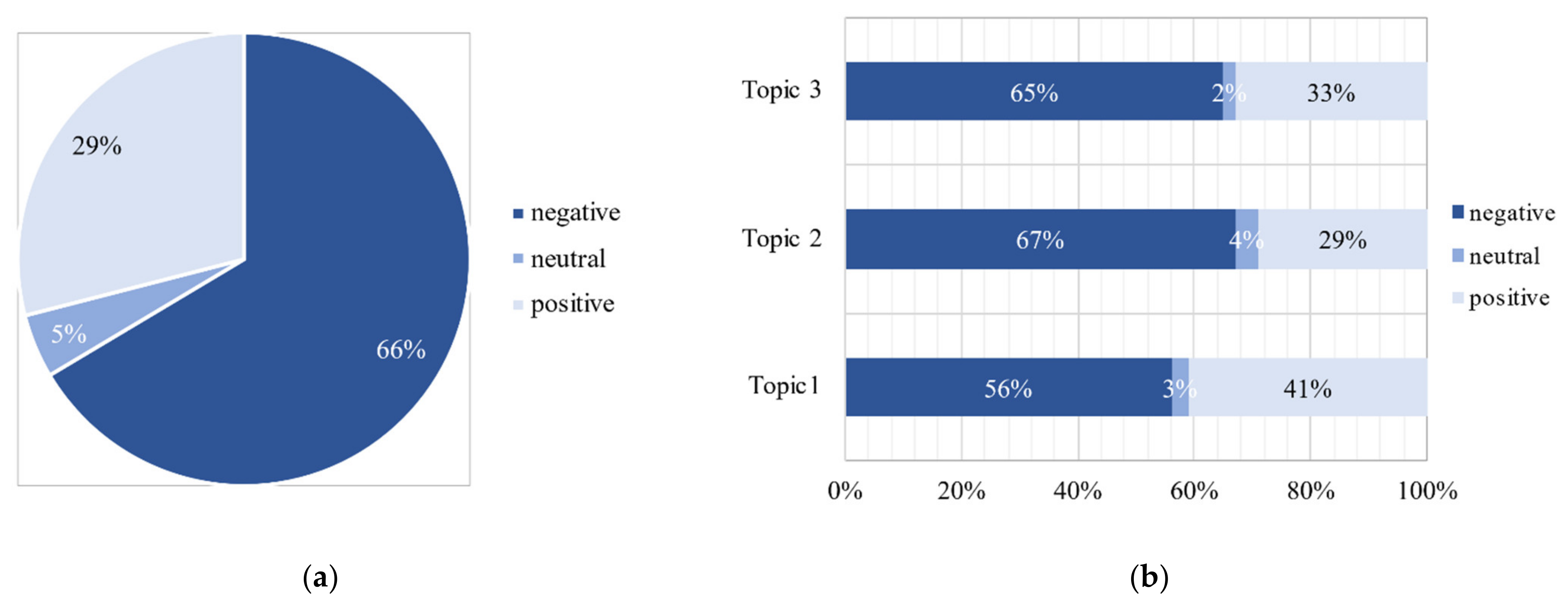
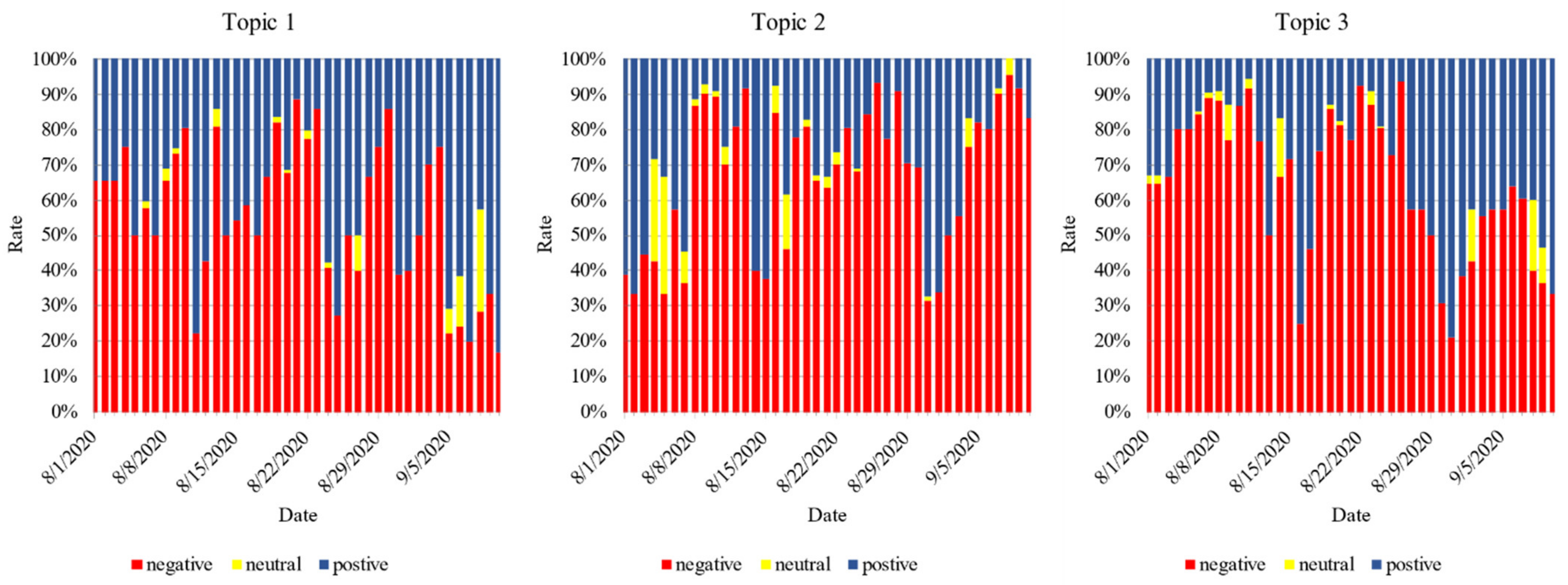
| Topic | Meaning of Topic | Keywords | Rate |
|---|---|---|---|
| 1 | Description of unfair events | video, news, Weibo, Harbin, Dalian, refuse, subway, bus | 19.8% |
| 2 | Provision of transportation service | driver, police, staff, talk, speak up, blame, patience, explanation, demonstrate | 33.4% |
| 3 | Status quo of elderly people | society, without, consider, unable to use, smartphones, groups, policies, humanization | 33.9% |
| 4 | Pandemic prevention | pandemic, prevention, control, personnel, work, requirements, measures, management, implementation, COVID-19 | 7.3% |
| 5 | Government response | CCTV, news, response, support, official, angle, regulation, transportation, discussion | 5.6% |
| Weibo Messages | |
|---|---|
| 1 | In principle, the driver is right, but we should think of other ways to help elderly people rather than rudely refuse their access. |
| 2 | It is not appropriate for the staff to shout without masks. |
| 3 | When observing that elderly people cannot operate smartphones, the staff should offer demonstrations to the elderly people! |
| 4 | Understandably, the staff must strengthen the management of pandemic prevention, but their method is not appropriate. |
| 5 | Does it mean that an elderly person who cannot use the health code does not deserve to travel by bus? Is it appropriate for the elderly person to be treated unfairly? |
| Weibo Messages | |
|---|---|
| 1 | Using health codes seems convenient, but it does not take into account all citizens, especially elderly people who do not use smartphones. |
| 2 | Society is progressing, but people are becoming more selfish. Everybody grows old and we will become old someday. |
| 3 | Elderly people are not keeping pace with the times. We should stop to help them. |
| 4 | This policy is inconvenient and inhumane because most elderly people cannot use smartphones. |
| 5 | Health codes and similar digital products benefit the public, but also damage the ability of elderly groups to enjoy the equity and fairness of society. |
Publisher’s Note: MDPI stays neutral with regard to jurisdictional claims in published maps and institutional affiliations. |
© 2021 by the authors. Licensee MDPI, Basel, Switzerland. This article is an open access article distributed under the terms and conditions of the Creative Commons Attribution (CC BY) license (http://creativecommons.org/licenses/by/4.0/).
Share and Cite
Liu, X.; Ye, Q.; Li, Y.; Fan, J.; Tao, Y. Examining Public Concerns and Attitudes toward Unfair Events Involving Elderly Travelers during the COVID-19 Pandemic Using Weibo Data. Int. J. Environ. Res. Public Health 2021, 18, 1756. https://doi.org/10.3390/ijerph18041756
Liu X, Ye Q, Li Y, Fan J, Tao Y. Examining Public Concerns and Attitudes toward Unfair Events Involving Elderly Travelers during the COVID-19 Pandemic Using Weibo Data. International Journal of Environmental Research and Public Health. 2021; 18(4):1756. https://doi.org/10.3390/ijerph18041756
Chicago/Turabian StyleLiu, Xinghua, Qian Ye, Ye Li, Jing Fan, and Yue Tao. 2021. "Examining Public Concerns and Attitudes toward Unfair Events Involving Elderly Travelers during the COVID-19 Pandemic Using Weibo Data" International Journal of Environmental Research and Public Health 18, no. 4: 1756. https://doi.org/10.3390/ijerph18041756
APA StyleLiu, X., Ye, Q., Li, Y., Fan, J., & Tao, Y. (2021). Examining Public Concerns and Attitudes toward Unfair Events Involving Elderly Travelers during the COVID-19 Pandemic Using Weibo Data. International Journal of Environmental Research and Public Health, 18(4), 1756. https://doi.org/10.3390/ijerph18041756








